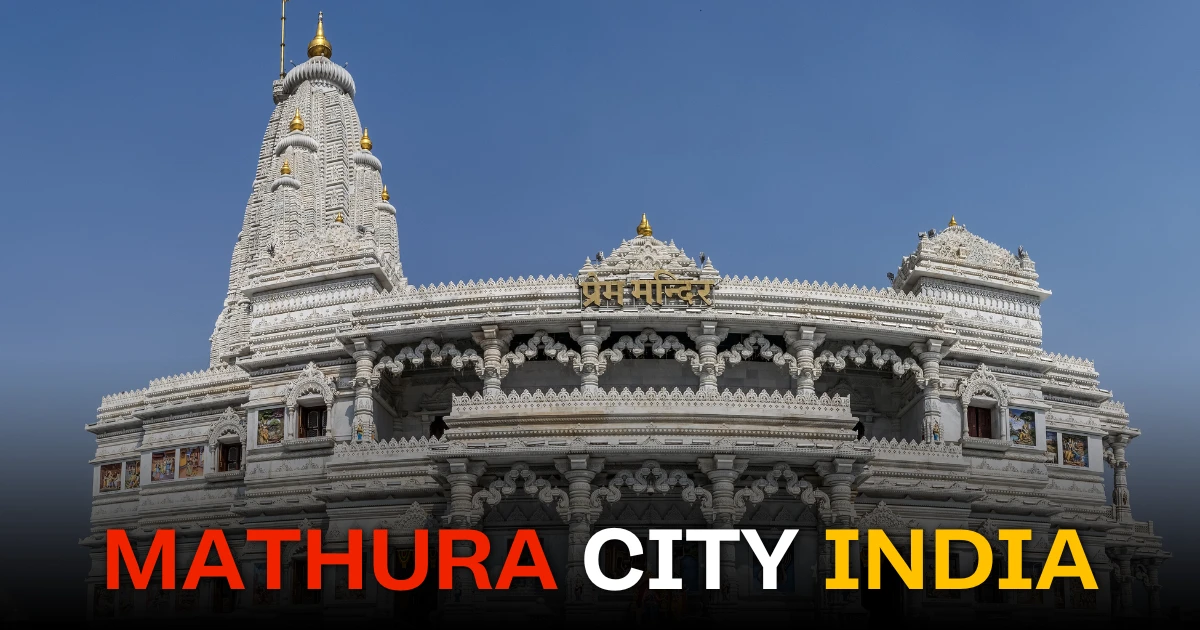If you once step into the lanes of Mathura City India, you will find that this town is not only a place marked on the map, but a living chronicle of the long journey of time. On the stones here, in the sound of temple bells, and in the cool winds of Yamuna, everything can still be heard that has touched the human heart for centuries. This is the very land where the butter-stealing plays of child Krishna turned into folklore and where even today every lane seems to point towards some untold story.
Why does the history and culture of Mathura India feel eternal?
The history and culture of Mathura India cannot be searched only in scriptures or archives; it breathes in the life of the people here. In the carvings of the temple walls, in the melody of hymns, and even in the voice of that shopkeeper who, while handing over prasad, also shares the feeling of devotion.
Greek travellers called it a prosperous town, Buddhist monks described its viharas, dynasties decorated it with art and architecture, and English documents mentioned its fairs, ghats, and the continuous stream of pilgrims. Today when you walk in its lanes it feels as if you are passing through many eras at once.
Are the famous temples in Mathura city mere shrines?
No. The famous temples in Mathura city are not only places of worship, they are the living witnesses of faith and history. The Krishna Janmabhoomi Temple is like that axis where myth and reality embrace one another. Seeing the Dwarkadhish Temple it seems as if art itself has taken the form of devotion. And at Vishram Ghat, when in the evening aarti the bells echo, then it is understood that worship is not only ritual, but also a dialogue of the soul and eternity.
In times of festivals these temples become the heart of the town. On Janmashtami when at midnight the chants resound, or on Holi when the courtyards fill with colours, then it feels as if the entire universe was waiting for this very moment.
What are the tourist attractions in Mathura city beyond temples?
Although temples are the identity of this town, other tourist attractions in Mathura city also make the experience complete. The ghats of Yamuna, especially Vishram Ghat, are like that invisible bridge which connects gods and men, past and present. In the evening aarti when lamps wave and float upon water, time also seems to stop there.
In Mathura Museum the sculptures of Kushan and Gupta period still preserve the same skill and beauty. And the bazaars of the lanes — where from brass idols to gulal everything is sold — they show that tradition does not live only in temples, but also in trade.
During festivals the whole town becomes a stage of some epic. At the time of Holi this city overflows in a flood of colours and on the night of Janmashtami when the sound of devotion reaches the sky, then it feels as if even the heavens have stopped to listen to this moment.
Why does Mathura City India remain timeless in the modern age?
Because here modernity has come, but the soul has not gone. At the crossroads of Mathura City India, you will hear the noise of traffic, and at the same moment also the sound of the conch shell from the nearby temple. New buildings have risen, but the old ghats are still holding the footprints of millions of devotees. This is the strength of this town — it does not fight modernity, but absorbs it.
That is why Mathura is not only a site of tourism, but an experience. An experience which shows that story can cross ages, devotion can take new form in every generation, and culture, when rooted in sacredness, never becomes old.
Why travel with Mathura Vrindavan City?
Because journey is not only the name of seeing places; it is the dialogue of the soul. The purpose of Mathura Vrindavan City is only this — that we take you beyond maps and guidebooks. To show you how in the morning aarti the sound of bells merges with the heartbeat, how the lamps floating on Yamuna bring light not only in the water but also in the memories.
The experience of Mathura is not once for all; it becomes the companion of a lifetime. And we try to take you towards that very experience.
FAQs on Mathura City India
1. Why is Mathura City India so famous?
Because it is known as the birthplace of Lord Krishna and as one of India’s most sacred cultural and spiritual centres.
2. What are the major tourist attractions in Mathura city?
Krishna Janmabhoomi Temple, Dwarkadhish Temple, Vishram Ghat, Mathura Museum, and the bazaars of the old city.
3. How significant is the history and culture of Mathura India?
With more than 2,500 years of history, Mathura reflects Hindu, Buddhist, and later traditions, making it a cultural treasure.
4. Which are the most famous temples in Mathura city?
The Krishna Janmabhoomi, Dwarkadhish, Gita Mandir, and Vishram Ghat temples are among the most revered.
5. What is the best time to visit Mathura?
Winter months (October–March) are pleasant, though Holi and Janmashtami offer unforgettable cultural experiences.
Plan Your Spiritual Journey Today
Have questions or need assistance organizing your visit to the sacred temples of Mathura and Vrindavan? We’re here to help you every step of the way.
Email us at info@mathuravrindavancity.com
Call or WhatsApp us at +919528693439
Let the divine journey begin with Mathura Vrindavan city
